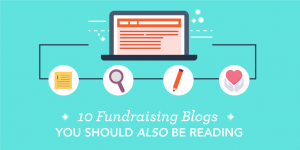What are psychographics? Just as demographics describe what your customers look like (age, gender, ethnicity, income), psychographics describe how your customers think and behave. This gives you another way to segment or personalize your direct mail to make it more relevant.
We can illustrate the power of psychographics by using data reported in an article from Media Post. The report describes key differences in life attitudes between younger and older generations.
According to the research, older adults are less likely to report concerns about such things as age-related medical and financial challenges as younger adults. At the same time, older adults report experiencing fewer of the benefits of aging that younger adults expect to enjoy some day, such as spending more time with family or having more leisure time. They also tend to be positive about their lives, with the plurality (45%) believing that life has turned out “better than expected.”
Psychographics are a powerful way to add another layer of relevance to any demographic or other targeting you might already be doing. Top this off with name or other personalization, and you will speak even more powerfully—and effectively—to each person in your database.
How could you use such information to tweak your message?
If you sell insurance, for example, the natural inclination might be to assume older adults are more concerned about their ability to pay for medical care or maintain financial security when, in fact, you might have better success by focusing on giving them the financial flexibility to travel or re-engineer careers later in life.
If you are a financial planning firm, you might target younger adults with the message “plan for the future,” while targeting older adults (especially those in higher income brackets) with the message, “you’ve done a great job planning your life so far, let us help you continue to make great decisions!”
In the non-profit sector where efficient fundraising is key, psychographics plays a role in your messaging to past and potential donors. For example, if you are mailing to previous donors and you have different areas they have dedicated their gift to – in your follow-up appeals you can use pictures or text to referencing the success their gift helped you in that specific area. If you are reaching potential donors you might want to try and find out “why they give” and focus your messaging to them based on those responses. If you don’t have this info, you might want to start looking at collecting it and using it down the road.
Of course, there will be variation within every demographic group, and there are nearly infinite attitudes, preferences and behaviors from which you can choose. How do you know which psychographic characteristics to use?
This is where testing comes in. Break your lists into multiple segments, or use control groups to test one message against the other. Test multiple messages to emphasize different psychographic characteristics. See which aspects are the most likely to gain the biggest response from your list, in your marketplace, with your product. Test and refine your results over time.
More Insights To Enjoy:
+ Finding the Right Data is Easier Than You Think
+ Use Your Data to Describe and Predict
© Action Graphics, 2011. Article taken from Action Insights, Vol. 2, Issue 6. Sign up today to receive future issues of our newsletters.



